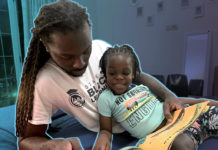The other day, I stumbled upon an online MSNBC interview with Dr. Robin DiAngelo about the release of her new book, “Nice Racism: How Progressive White People Perpetuate Racial Harm.” At first glance, my eyes immediately zoomed in on the book’s title, which gave me strong white gaze vibes. As a Black man, the term “nice racism,” quite frankly, doesn’t sit well with me.
I find the title’s oxymoronic nature emotionally triggering and difficult to get past because I keep thinking—There’s nothing nice about spending your whole life navigating through and being oppressed in a society that is deeply rooted in whiteness. Regardless of my personal feelings, the title grabbed my attention and immediately got me thinking about how this “nice racism” translates in our schools.
RACIAL MICROAGGRESSIONS
Racial microaggressions are arguably the most popular and cringiest form of “nice racism” that exists. From white teachers making racist assumptions about all Asian students being strong at Math to profusely praising their Black students for their exemplary, yet “surprising” verbal command of the English language, it’s hard to miss. We also can’t forget their attempts to deny their racist actions by making unsubstantiated claims of color blindness.
Although white teachers may view their “nice” comments as complimentary, they must recognize their comments come off as ignorant and insensitive to their BIPOC students.
Although white teachers may view their “nice” comments as complimentary, they must recognize their comments come off as ignorant and insensitive to their BIPOC students. The only way for them to fully understand the racial harm embedded in their comments is to educate themselves on the historical context of these microaggressions.
WHITE SAVIORISM
In many schools, there are certain white teachers who consciously (and subconsciously) engage in white saviorism. White saviorism does not allow space for BIPOC students to see the greatness in who they are and who they are destined to be. How can we expect our students to build self-worth and function as independent critical thinkers if we’re always pointing out, through our actions, that they are incapable of being great?
White savior teachers are in the business of nurturing and stroking their own egos.
In essence, white savior teachers are in the business of nurturing and stroking their own egos. They have implicit biases about BIPOC students that cause them to assess the intellectual capabilities of their BlPOC student population through a deficit-based lens as opposed to an asset-based lens that focuses the attention of their skills and potential to thrive academically.
As a teacher, if you’re entering the classroom with the mindset of “fixing” your students, then you’re already communicating to them that they’re failures who cannot function or excel on their own. Rather than trying to “fix” them, your energy should be concentrated on empowering them with the agency to build self-efficacy in everything they engage in.
DIVERSIFYING VS. DECOLONIZING CURRICULA
Although racial and cultural diversity within academic curricula is paramount and a must, this must be done with the intention of eradicating racist narratives. It’s not enough to have books and learning resources that feature BIPOC figures. We also must be mindful of the cultural appropriation and misinformation about BIPOC that is present in children’s books, textbooks, and other learning resources.
For instance, many Indigenous children’s books are “retold” stories, written through the lens of non-Indigenous children’s book authors, most of whom are white. Although well-intentioned in their efforts, the truth is that the narratives they share are written for the white gaze.
As antiracist teachers, we must combat whitewashed curricula by completing an audit that assesses the historical accuracy and validity of curricular resources pertaining to BIPOC.
As antiracist teachers, we must combat whitewashed curricula by completing an audit that assesses the historical accuracy and validity of curricular resources pertaining to BIPOC. The Sadker Foundation’s “Seven Forms of Instructional Bias” and Dr. Bree Picower’s “Tools of Whiteness” are two great resources that teachers can use to complete this task.
COMPLICITY BY PUBLIC SILENCE (DISCRETE ALLYSHIP)
White teachers within this antiracist movement can be found either playing the role of the ally or co-conspirator. The distinction between the two roles is most evident in situations where racism is being discussed within a school-wide setting. In this specific context, you have some white teachers who engage in “discrete allyship,” where they fail to publicly call out racist actions alongside their BIPOC colleagues during a staff meeting, but then send an email or text after the meeting to privately communicate their support and thank them for speaking up.
Although their feelings of empathy and compassion are much appreciated, the reality is their failure to publicly denounce racist actions makes them complicit in keeping alive the racist treatment that BIPOC students experience in schools. Public silence perpetuates racism and preserves white comfort.
Speaking out about racism is uncomfortable, intimidating and even scary to do, but this is what it means to be a true co-conspirator for BIPOC.
For the white teachers reading this, I get it. Speaking out about racism is uncomfortable, intimidating and even scary to do, but this is what it means to be a true co-conspirator for BIPOC. This level of transparency is needed to clearly illustrate the racial harm being done to our BIPOC students.
In order to fight racism, we have to expound upon our criteria for what constitutes it. Are there white folx within our schools who unapologetically expose themselves as racist? Absolutely! But the most dangerous white folx are the nice ones who don’t even realize how racist they can be, as indicated by the Nice White Parents podcast series.
To my fellow BIPOC teachers reading this, we must hold our trusted white colleagues accountable with love and education. By modeling this practice with them, they will then be equipped to do this with other white co-workers.










